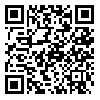Volume 5, Issue 17 And 18 (3-2015)
فصلنامه فناوری اطلاعات 2015, 5(17 And 18): 43-56 |
Back to browse issues page
Download citation:
BibTeX | RIS | EndNote | Medlars | ProCite | Reference Manager | RefWorks
Send citation to:



BibTeX | RIS | EndNote | Medlars | ProCite | Reference Manager | RefWorks
Send citation to:
Seif F, Osqueizadeh R. Effect of Menu Location on Visual Attention of Users of Websites. فصلنامه فناوری اطلاعات. 2015; 5 (17 and 18) :43-56
URL: http://jor.iranaict.ir/article-1-287-en.html
URL: http://jor.iranaict.ir/article-1-287-en.html
Department of Ergonomics, University of Social Welfare & Rehabilitation Sciences
Abstract: (6667 Views)
Objective: In order to identify users’ visual attention to left- and right-aligned menus on web pages, fixation count index (FCI) was assessed for both left and right menus using eye tracker to determine which menu is preferred by users in terms of visual attention. Methodology: In total, 116 pages with their menus aligned to left or right, classified into three groups, namely Persian pages, English pages, and Persian-English pages, were shown to 30 subjects who were asked to find a certain word in the menus. Eye tracker was used to collect and record the data pertaining to users’ fixation counts on each menu, as an indicator of their visual attention to the menus. Findings: No difference was found in terms of total fixation count on English pages with respect to menu direction (right or left). However, users’ total fixation counts varied, depending on menu direction (right or left), for Persian pages, Persian-English pages and, in general, for all pages of three sets, indicating a larger fixation count for right-side menus compared to the menus placed at the left side. Conclusion: Given the larger fixation count for right-aligned menus obtained in the present study and the well-established advantages of this type of menus, and since predictability of left-aligned menu has been an advantage in cultures where native languages are read from left to right, and because the previous studies have led to somehow mixed findings on fast performance of tasks and interaction with left-aligned menus, web designers and developers are recommended to use right-aligned menus in designing internal websites.
Type of Study: Applicable |
Subject:
Special
Received: 2013/09/2 | Accepted: 2015/03/4 | Published: 2015/03/4
Received: 2013/09/2 | Accepted: 2015/03/4 | Published: 2015/03/4
Send email to the article author



